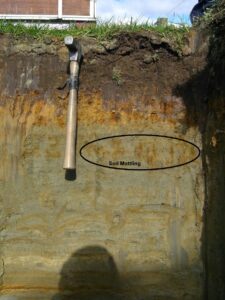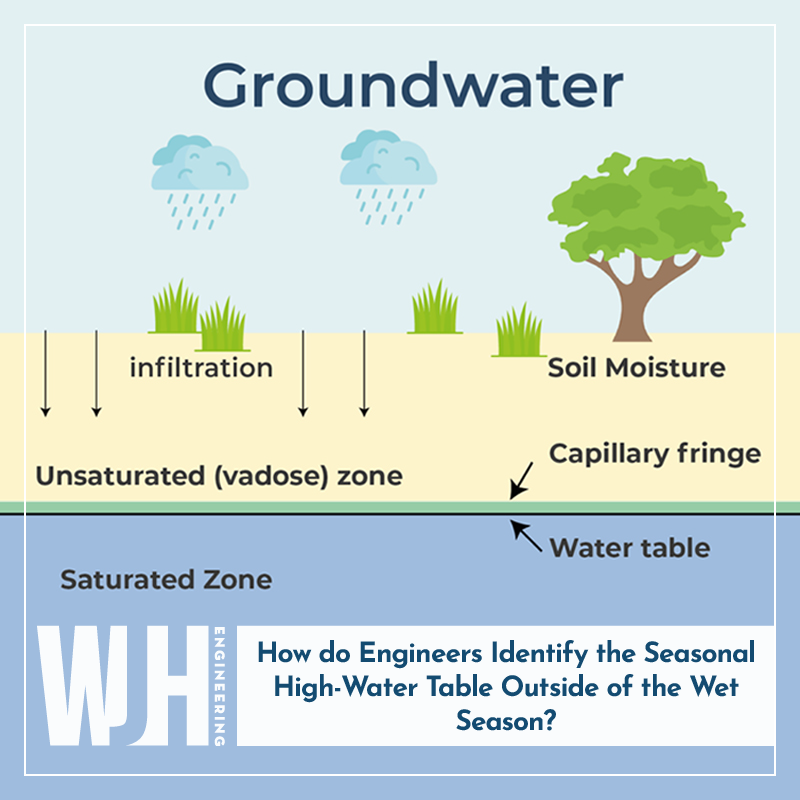The Seasonal High-Water Table (SHWT) is the highest elevation in which groundwater rises to during the wet season. As Civil Engineers, we must ensure that our systems are installed above this seasonal high-water table. This ensures that sufficient recharge can be provided, and it protects our designs from structural damage throughout the year. But how do civil engineers determine where the depth to the seasonal high-water table if it is not currently the wet season? In many cases, soil characteristics observed during excavation provide useful insight into how the groundwater depth changes throughout the course of the year.
Perhaps the greatest indication of the seasonal high-water table’s depth is the presence of soil mottling. Soil mottling appears as a blotchy contrast in soil colors that can be seen in test pits and other large soil excavation sites. The change in color occurs when the water table rises into aerobic soils, which are rich in oxygen, and replaces the oxygen with water. During the wet season, minerals in the aerobic soil dissolve into the groundwater. When the water level drops, the dissolved minerals are distributed back into the soil at different locations, creating a variety of colors.
The image to the right shows grey silty soils with orange mottles and streaks scattered throughout the horizon. Based on this evidence, a skilled civil engineer would determine that the seasonal high-water table lies at the top of this horizon.
Soil mottling is more than just an aesthetic feature of soil; it’s a vital tool for civil engineers assessing a site’s hydrologic characteristics. By analyzing these mottled patterns, engineers can effectively evaluate the seasonal high-water table, ensuring safer and more sustainable construction practices. Whether you’re a seasoned engineer or simply curious about the field, recognizing the significance of soil mottling can deepen your appreciation for the intricate relationship between soil and water management in civil engineering.

